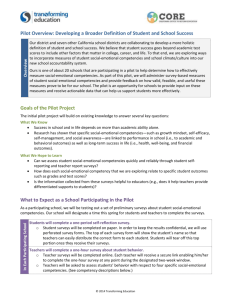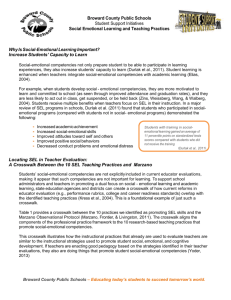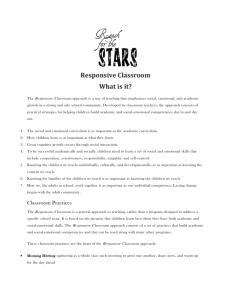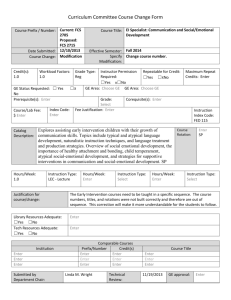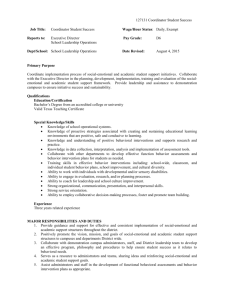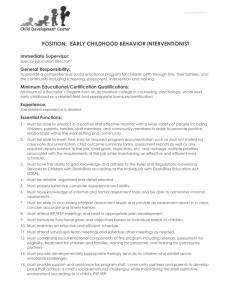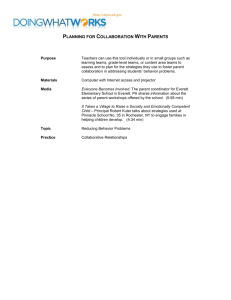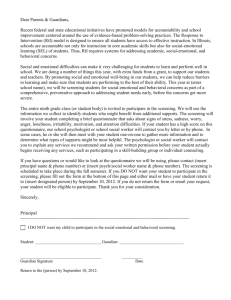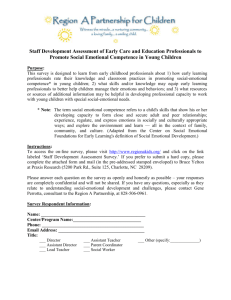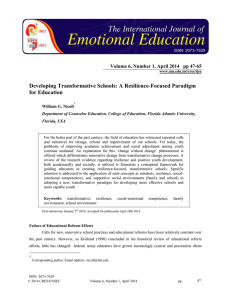File
advertisement
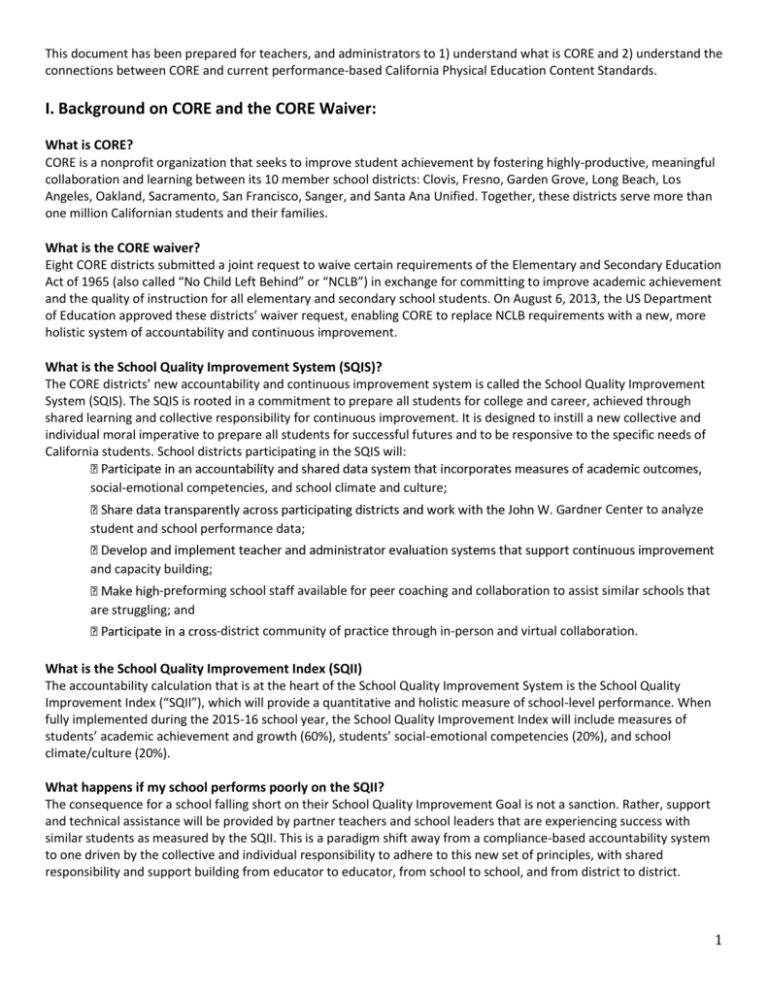
This document has been prepared for teachers, and administrators to 1) understand what is CORE and 2) understand the connections between CORE and current performance-based California Physical Education Content Standards. I. Background on CORE and the CORE Waiver: What is CORE? CORE is a nonprofit organization that seeks to improve student achievement by fostering highly-productive, meaningful collaboration and learning between its 10 member school districts: Clovis, Fresno, Garden Grove, Long Beach, Los Angeles, Oakland, Sacramento, San Francisco, Sanger, and Santa Ana Unified. Together, these districts serve more than one million Californian students and their families. What is the CORE waiver? Eight CORE districts submitted a joint request to waive certain requirements of the Elementary and Secondary Education Act of 1965 (also called “No Child Left Behind” or “NCLB”) in exchange for committing to improve academic achievement and the quality of instruction for all elementary and secondary school students. On August 6, 2013, the US Department of Education approved these districts’ waiver request, enabling CORE to replace NCLB requirements with a new, more holistic system of accountability and continuous improvement. What is the School Quality Improvement System (SQIS)? The CORE districts’ new accountability and continuous improvement system is called the School Quality Improvement System (SQIS). The SQIS is rooted in a commitment to prepare all students for college and career, achieved through shared learning and collective responsibility for continuous improvement. It is designed to instill a new collective and individual moral imperative to prepare all students for successful futures and to be responsive to the specific needs of California students. School districts participating in the SQIS will: social-emotional competencies, and school climate and culture; ardner Center to analyze student and school performance data; and capacity building; -preforming school staff available for peer coaching and collaboration to assist similar schools that are struggling; and -district community of practice through in-person and virtual collaboration. What is the School Quality Improvement Index (SQII) The accountability calculation that is at the heart of the School Quality Improvement System is the School Quality Improvement Index (“SQII”), which will provide a quantitative and holistic measure of school-level performance. When fully implemented during the 2015-16 school year, the School Quality Improvement Index will include measures of students’ academic achievement and growth (60%), students’ social-emotional competencies (20%), and school climate/culture (20%). What happens if my school performs poorly on the SQII? The consequence for a school falling short on their School Quality Improvement Goal is not a sanction. Rather, support and technical assistance will be provided by partner teachers and school leaders that are experiencing success with similar students as measured by the SQII. This is a paradigm shift away from a compliance-based accountability system to one driven by the collective and individual responsibility to adhere to this new set of principles, with shared responsibility and support building from educator to educator, from school to school, and from district to district. 1 Understanding the Social-Emotional Measures: What research shows that social-emotional competencies are important? Social-Emotional Competencies Overall: In a review of the mindsets and competencies that promote long-term learning, Professor Carol Dweck and her colleagues report that social-emotional competencies “can matter even more than cognitive factors for students’ academic performance. These may include students’ beliefs about themselves, their feelings about school, or their habits of self-control. Indeed, there is a growing recognition in education, psychology, and economics of the importance of [social-emotional] factors in achievement both in school and in the labor market (Duckworth & Seligman, 2005; Dweck, 1999; Heckman, Stixrud, & Urzua, 2006; Steele, Spencer, & Aronson, 2002). There has also been a recognition that these factors offer promising levers for raising the achievement of underprivileged children and, ultimately, closing achievement gaps based on race and income (Heckman et al., 2006). [This research] shows that educational interventions and initiatives that target these…factors can have transformative effects on students’ experience and achievement in school, improving core academic outcomes such as GPA and test scores months and even years later.” What are the four social-emotional competencies that CORE has prioritized? Growth mindset: Multiple longitudinal studies have shown that growth mindset is linked to increased motivation, better grades, and higher test scores.2 Studies have shown that students with a higher growth mindset work harder and spend more time on a subject instead of giving up when things get difficult. Teachers report that students who receive a growth mindset intervention demonstrate greater effort and interest in the classroom. Research suggests that having a growth mindset is particularly important during transitions (e.g. from elementary to middle or middle to high school), since students often meet with new challenges during such transitions. Self-Efficacy: Decades of research show that self-efficacy, or students’ belief in their ability to attain a certain goal, is a valid predictor of students’ motivation and learning. There is evidence that students with high levels of self-efficacy participate more in class, work harder, persist longer, and have fewer adverse emotional reactions when encountering difficulties than their peers with lower self-efficacy.5 High self-efficacy can also motivate students to use specific learning strategies and to engage in self-directed learning. Self-Management: One recent report demonstrates that, controlling for academic achievement, children who were rated one standard deviation above the mean on a measure of self-control at age 4 had 39% greater odds of completing college by age 25. Another recent study showed that children’s self-control between ages 3-11 predicted key adult outcomes, such as physical health, substance dependence, personal finances, and criminal offenses. Social Awareness: Social awareness is a crucial component of appropriate classroom behavior, which contributes to an environment conducive to learning. Social awareness is also widely established as an important factor in workforce success. One recent employer survey conducted by the Partnership for 21st Century Skills demonstrates that four of the five most important skills for high school graduates entering the work force are linked to social awareness: professionalism, collaboration, communication, and social responsibility.9 2 SQII and Physical Education - Kindergarten School Quality Improvement Index (SQII) 20% Social - Emotional SE Competency Definition Kindergarten Physical Education CA PE Standard Performance-Benchmark Students demonstrate and utilize knowledge of psychological and sociological concepts, principles, and strategies that apply to the learning and performance of physical activity. Growth Mindset The belief that one’s own abilities can grow with effort. Student with a growth mindset see effort as necessary for success, embrace challenges, learn from criticism and persist in the face of set backs Self-Responsibility 5.2 Participant willingly in physical activities Self -Efficacy The belief in one’s own ability to succeed in achieving an outcome or reaching a goal. Self-efficacy reflects confidence in the ability to exert control over one’s own motivation, behavior, and environment. The ability to regulate one’s emotions, thoughts, and behaviors effectively in different situations. This includes managing stress, delaying gratification, motivating oneself, and setting and working toward personal and academic goals. Self-Responsibility 5.2 Participant willingly in physical activities Self-Responsibility 5.1 Identify the feelings that result from participation in physical activity. Social Interaction 5.3 Demonstrate the characteristics of sharing in a physical activity. Self Responsibility 5.4 Describe how positive social interaction can make physical activity with others more fun. Group Dynamics 5.5 Participate as a leader and a follower during physical activities. Self Responsibility 5.4 Describe how positive social interaction can make physical activity with others more fun. Group Dynamics 5.5 Participate as a leader and a follower during physical activities. Self-Management Social Awareness The ability to take the perspective of and empathize with others from diverse backgrounds and cultures, to understand social and ethical norms for behavior, and to recognize family, school, and community resources and supports. 3 Kindergarten Students demonstrate and utilize knowledge of psychological and sociological concepts, principles, and strategies that apply to the learning and performance of physical activity. Self-Responsibility 5.1 Identify the feelings that result from participation in physical activity. 5.2 Participate willingly in physical activities. Social Interaction 5.3 Demonstrate the characteristics of sharing in a physical activity. 5.4 Describe how positive social interaction can make physical activity with others more fun. Group Dynamics 5.5 Participate as a leader and a follower during physical activities. Four social-emotional competencies for CORE 4
